Caldwell Observing Program Coordinator:Raymond B. Howard |
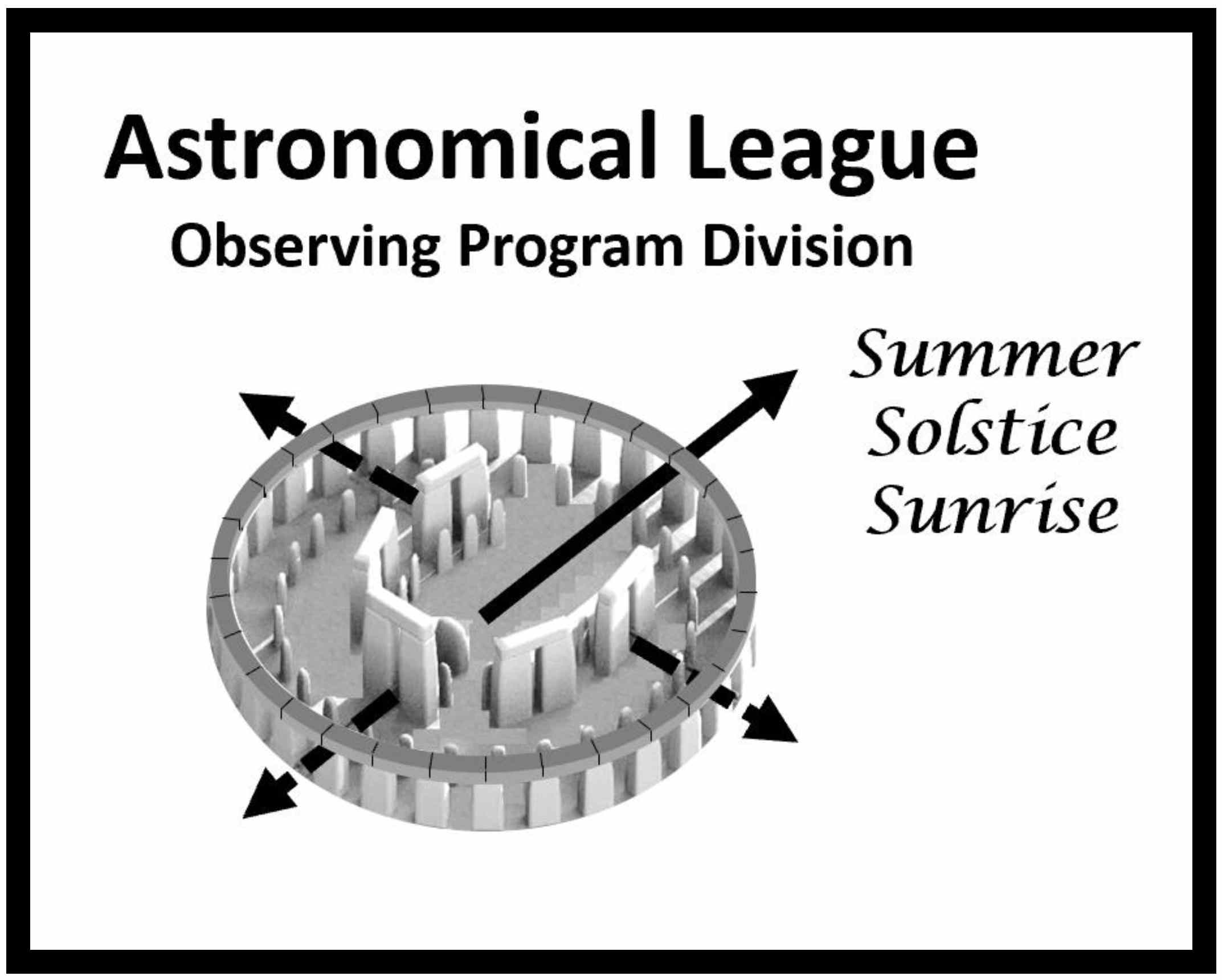 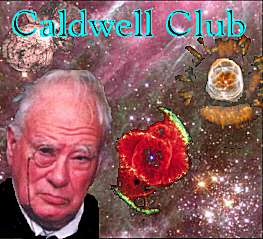 |
IntroductionWelcome to the Astronomical League’s Caldwell Observing Program. While Charles Messier made a catalogue of faint fuzzy objects to be avoided when searching for comets, Sir Patrick Caldwell-Moore has made a catalogue of beautiful and interesting objects you should, literally, go out of your way to observe. Two of the obvious objects were never even given NGC designations. A letter from Sir Patrick (below) explains why and how he created the list at his home in Selsey, England, surrounded by his personal observatories. Background InformationThe Caldwell List:The 109 objects on the list range from magnitude 1 through 13, and Declination +85° to -80°, so some diligence will be required. The benefits far outweigh any inconvenience, however, as you will be treated to many wonderful new sights to behold in the night sky, and maybe even make some new international observing friends along the way. The Awards:The Caldwell List has been broken into two award categories; 70 objects, and the complete list of 109. Each award will consist of a certificate with Sir Patrick Moore’s signature and an award pin. The pictures on the pins are two of Sir Patrick’s favorites; the Cat’s Eye Nebula, visible from the Northern Hemisphere, and the Tarantula Nebula, visible from the Southern Hemisphere. We greatly appreciate Sir Patrick’s support in bringing this Observing Program to the Astronomical League. Thanks also to NASA for the Hubble Space Telescope image of the Cat’s Eye Nebula (C6) and to the VLT for the image of the Tarantula Nebula in LMC (C103) |
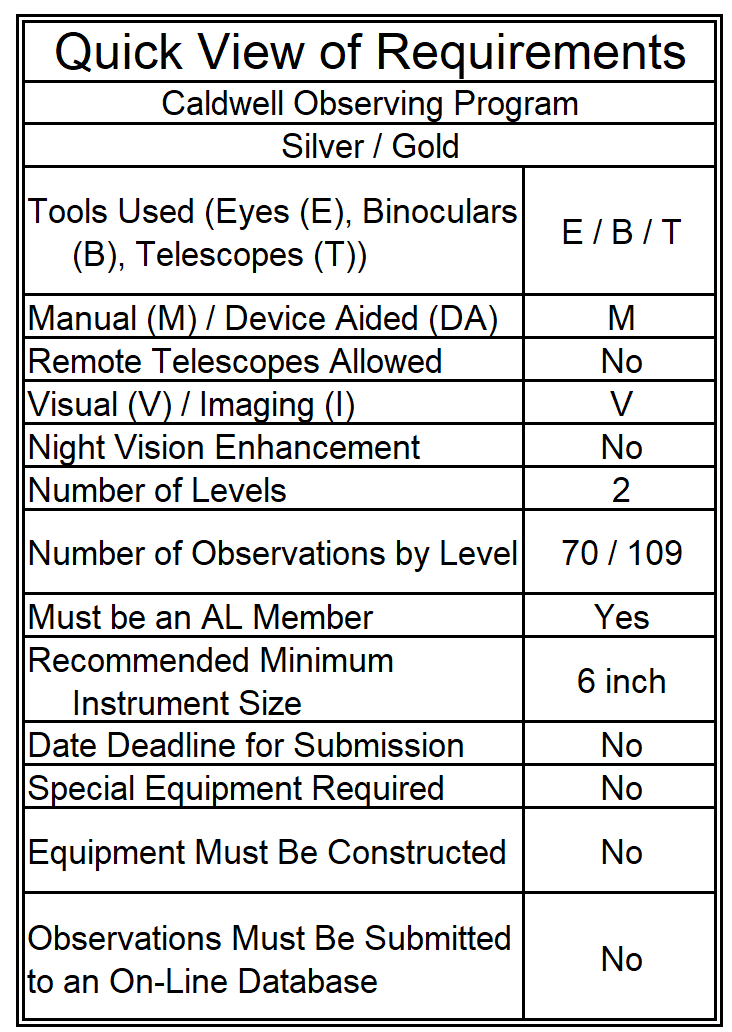 |
A Letter from Sir Patrick Moore:
SIR PATRICK MOORE CBE DSc (Hon) FRAS
Farthings, West Street, Selsey, England
The idea of the Caldwell Catalogue came to me one night, after I had been observing the Moon (my own subject) and had looked casually at the Perseus Sword-Handle. This has no Messier number. (Messier catalogued nebulae as ‘objects to avoid’ during his comet searches, and in any case limited himself to the northern part of the sky.) There are many Messier clubs. Why not draw up a catalogue of bright nebular objects omitted by Messier?
I did so – and more or less on the spur of the moment, sent it off to Sky and Telescope. To my surprise, it caught on, and by now everyone seems to use the Caldwell numbers. I could not use M numbers, because Messier and Moore begin with M – but my proper name is hyphenated (Caldwell-Moore), so I used C.
All the Caldwell objects are within range of modest equipment. They are arranged in declinations so that to survey them all means some travel – but that is not a problem nowadays.
Why not try a Caldwell competition? This is not a difficult matter – and here is the list; try it and see how many of the C objects you can locate. I wonder who will be the first observer to win a Caldwell Certificate?
I wish you luck, and clear skies!
PATRICK MOORE

Requirements and RulesThis certification is available to members of the Astronomical League, either through their local astronomical society or as Members-At-Large. If you are not a member and would like to become one, check with your local astronomical society, search for a local society on the Astronomical League Website, or join as a Member-At-Large . You must observe and record all required information for your observations on the AL Observation Log Sheet, or a similar form. This form has a place for description and drawing. Only one is required but the detail should be sufficient to convince your society’s awards coordinator that you did in fact expend the time and effort to find and, hopefully, appreciate the reason that Sir Patrick selected the object for a place of honor on his list. An image may be added but does not replace the visual observation. Any telescope or binoculars are acceptable, however, computer-assisted and Go-To capabilities are not allowed. If you prefer to pursue this certification using imaging, go to the Imaging – Caldwell Observing Program. |
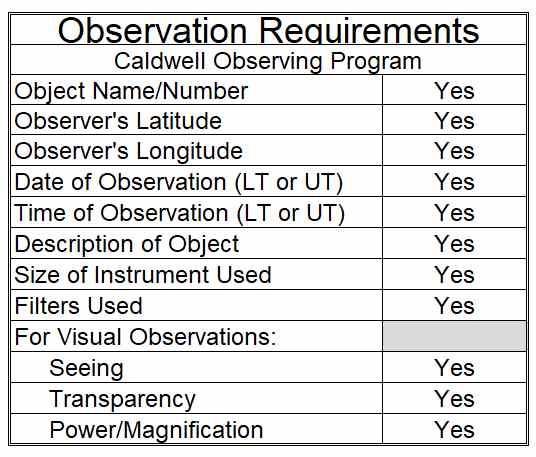 |
Submitting for Certification
| To receive your certificate and pin, you may submit your observations to your society’s awards coordinator for review and approval, who will then contact the Caldwell Observing Program Coordinator, or you may send copies of your logs to the League Coordinator. Members-at-Large should send copies of their logs directly to the League Coordinator. Upon verification, your award will be forwarded to your society’s representative for presentation, or directly to Members-at-Large.
Be sure to include your name, mailing address, email, phone number, society affiliation or Member-at-Large, and to whom the certification should be sent. |
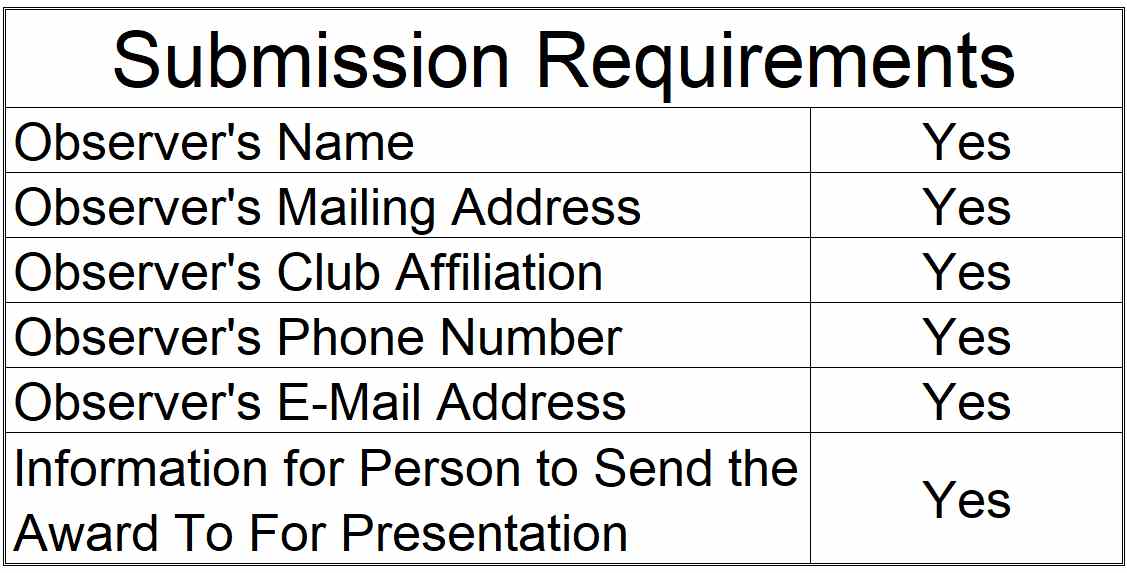 |
Upon verification of your submission and of your active membership in the Astronomical League, your recognition (certificate, pin, etc.) will be sent to you or to the awards coordinator for your society, as you specified. Your name will also appear in an upcoming issue of the Reflector magazine and in the Astronomical League’s online database. Congratulations. Good luck with your next observing challenge.
Caldwell Observing Program Coordinator:
Raymond B. Howard
3939 Greenwood Ave.
Oakland, CA 94602
(510) 326-5405
E-mail: raymondhow@aol.com



